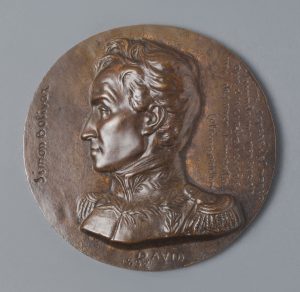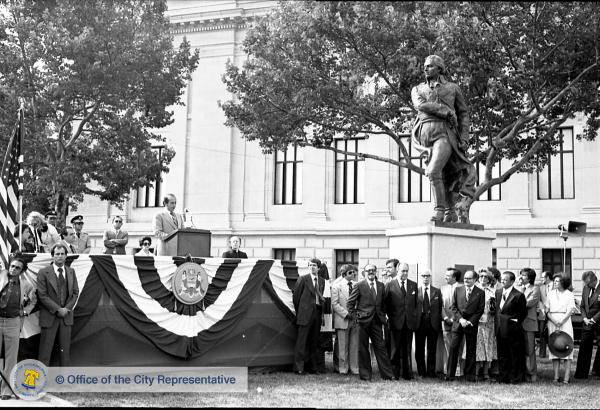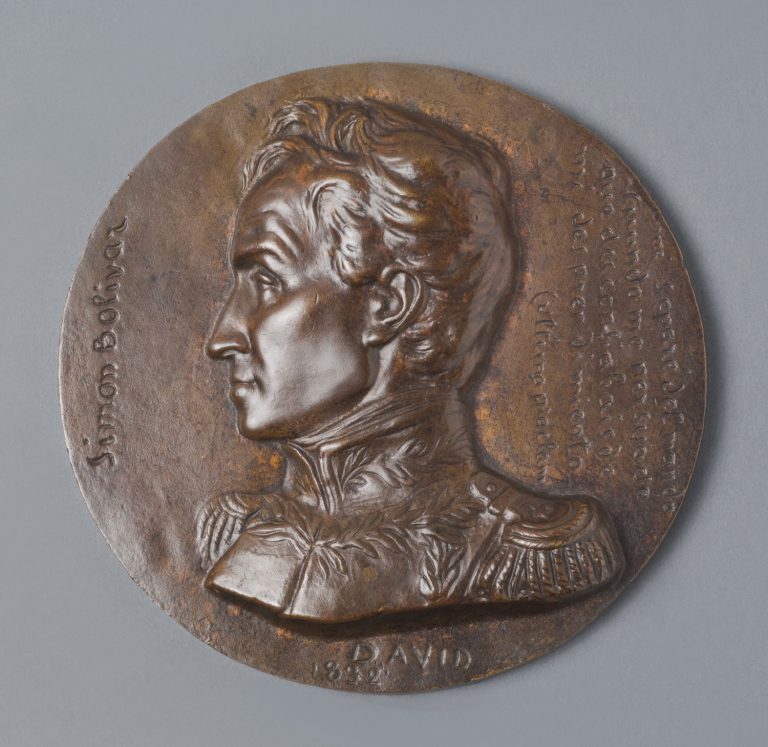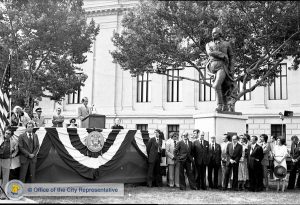Spanish-American Revolutions
By Monica Henry
Essay
As a port with longstanding commercial, cultural, and political connections with Spanish America, Philadelphia played a significant role in the era of Spanish-American revolutions in the late eighteenth and early nineteenth century. The City of Brotherly Love welcomed individuals escaping Spanish domination and helped to support their ideas about liberty, equality and independence.
Philadelphia’s ties with Spanish America can be traced to the eighteenth century, when merchants traded flour, rum, furniture, and general merchandise for sugar, molasses, coffee, tallow, and hides from the Spanish colonies. In 1787 alone $500,000 worth of specie from the Spanish colonies entered the city. Philadelphia became the major center of Hispanic studies as the American Philosophical Society amassed the largest collection on Spanish America and became the first scientific institution to appoint Spanish Americans as corresponding members.

At the close of the century, as discontent and unrest spread throughout the Spanish empire, Philadelphia publishers printed revolutionary pamphlets and books. In El Desengaño del Hombre (1794), the first book ever to be published in Spanish in the United States, Santiago Puglia (1760-94)—an exile from Spain in Philadelphia since 1790—condemned monarchism as he drew an idealized picture of U.S. democracy for his Spanish-American readership. Philadelphia also was listed as the place of publication when the revolutionary leader of Venezuela, Francisco de Miranda (1750-1816), published the Peruvian Juan Pablo Viscardo’s (1748-1798) Carta dirigida a los Españoles Americanos (1799) calling his countrymen to separate from Spain. Although Miranda published the work in London, he had been favorably impressed with Philadelphia during his visit in 1783-84 and regarded the city as the cradle of liberty. Likewise, the Libertador General Simón Bolívar (1783-1830) of Venezuela, whose army was to free Northern South America in the late 1810s and 1820s, visited the United States on his way back home from Europe in 1806. As he sailed from Philadelphia to La Guaira, near Caracas, he was convinced he had seen “rational liberty for the first time.”
Exiles in Philadelphia
Exiled Spanish Americans also resided in Philadelphia. Manuel de Trujillo y Torres (1762-1822), who fled the vice-royalty of New Granada (later Colombia) after actively opposing the Spanish authorities, was the most prominent. Upon his arrival in 1796, Torres made contacts with influential political leaders and merchants, wrote informative articles on Spanish America for the newspaper Aurora edited by his friend William Duane (1760-1835), published pamphlets and books on U.S.-Spanish-America trade, and helped revolutionary envoys purchase arms and munitions for their governments. Torres’s house, first on Spruce Street and later at 193 S. Tenth Street, was the meeting place for other exiles from New Granada such as Joaquín Sorondo, Francisco Zinza and Manuel Palacio Fajardo (1784-1819).
When the Monroe administration recognized the independence of the new Spanish-American republics in 1822, the ailing Torres became the first official minister of the Republic of Colombia (today Venezuela, Colombia, Ecuador and Panama) in the United States. He died the same year and was buried in the cemetery of old St. Mary’s Church of his adopted city. Torres and the other Spanish-Americans’ work was pursued by the Cuban-born priest Félix Varela (1787-1853). In 1823 he was forced into exile and settled in Philadelphia. There he published El Habanero, Cuba’s first pro-independence newspaper, and translated English works into Spanish, including Thomas Jefferson’s (1743-1826) A Manual of Parliamentary Practice.
While merchants such as Stephen Girard (1750-1831) continued commercial activities in Central and South American ports during the 1810s and 1820s, a Philadelphian represented U.S. political interests in the Western Hemisphere as well. In 1825 President John Quincy Adams (1767-1848) appointed John Sergeant (1779-1852), a lawyer and leader of the Philadelphia bar, delegate to the first meeting of American nations to take place at the Panama isthmus in 1826. From the 1830s, however, as Spanish Americans became more concentrated on building their nations, Philadelphians gradually lost interest in their southern neighbors while focusing increasingly on local and national issues and politics.
Monica Henry is Associate Professor at the Université Paris Est-Créteil (France). She is currently working on a book on the origins of Pan-Americanism. (Author information current at time of publication.)
Copyright 2012, Rutgers University.


